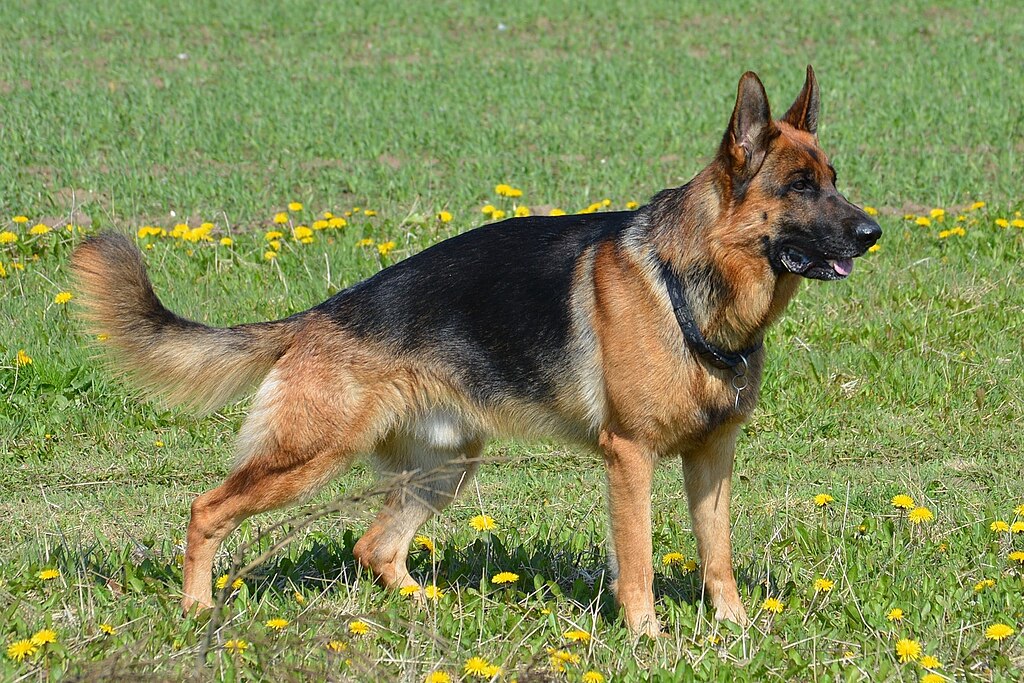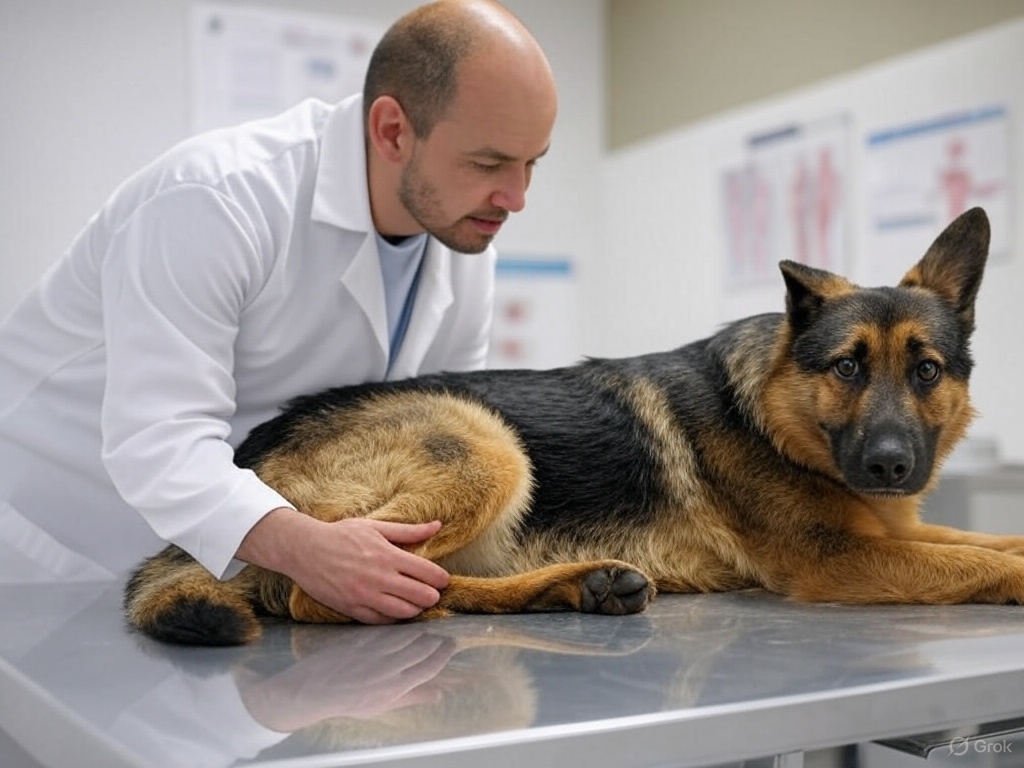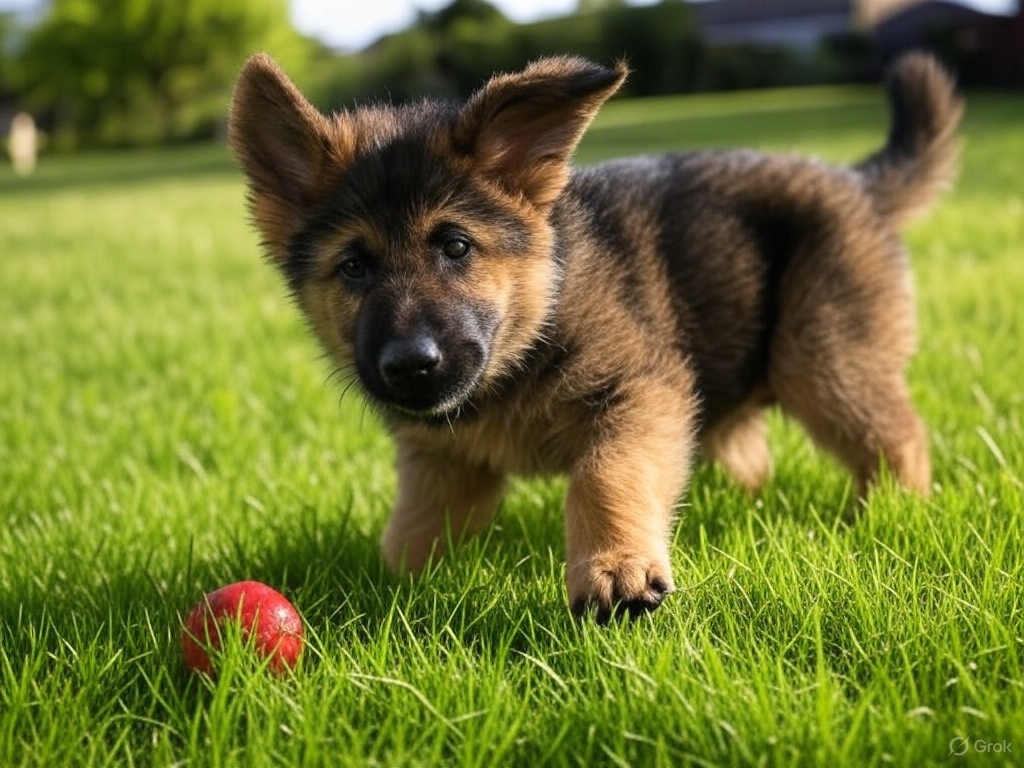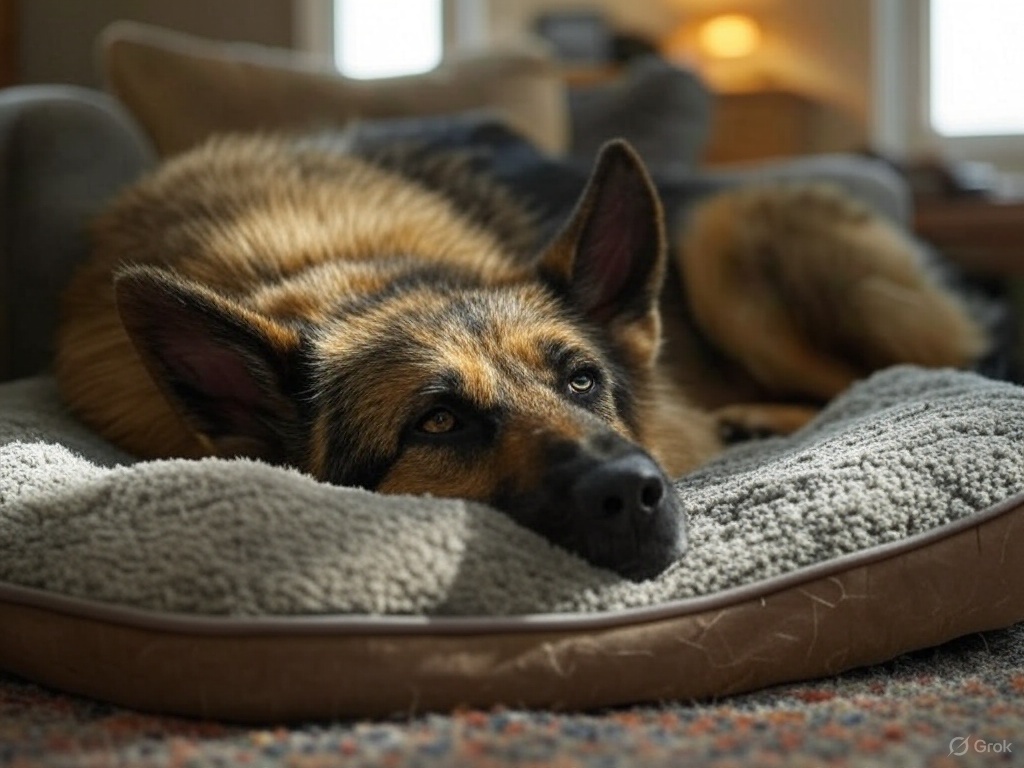
If you own a German Shepherd, you love their strength, loyalty, and energy. For example, these dogs are smart and active, making them great pets. However, there’s something important every owner should know: hip dysplasia in German Shepherds. This health issue affects their hips and can make life harder for them. In this blog post, we’ll explain what it is, why it happens, how to spot German Shepherd hip dysplasia symptoms, and why understanding this condition matters.
Table of Contents
- What Is Hip Dysplasia?
- Why Do German Shepherds Get This Condition?
- Symptoms: What to Look For
- Why Owners Need to Know
- How Vets Check for Hip Problems
- What Can You Do About It?
- How to Prevent It
- Living with a German Shepherd with Hip Issues
- Final Thoughts
- References
What Is Hip Dysplasia?

Hip dysplasia is a problem with the hip joint. Specifically, the hip joint connects the leg to the body, working like a ball and socket. The round part (ball) at the top of the leg bone fits into a cup-shaped part (socket) in the pelvis. In a healthy dog, these fit perfectly, letting the dog move easily—walking, running, or jumping.
In German Shepherds with hip dysplasia, however, the ball and socket joint misalign, either due to improper shaping or instability. This leads to friction or poor movement, resulting in discomfort, inflammation, or potentially arthritis as time progresses (American Kennel Club, n.d.).
Why Do German Shepherds Get This Condition?
- Genes: This condition can come from a dog’s parents. For instance, if a German Shepherd’s mom or dad had it, the puppy might too. Good breeders test their dogs’ hips before breeding (VCA Animal Hospitals, n.d.).
- Size and Growth: German Shepherds are large and grow fast as puppies. Consequently, if bones grow too quickly or unevenly, it can lead to hip issues.
- Exercise and Weight: Too much running or jumping when young, or being overweight, stresses the hips. Although this doesn’t start the problem, it can make it worse.
German Shepherd Hip Dysplasia Symptoms: What to Look For
How do you know if your dog has this issue? The signs aren’t always clear, especially in young dogs. However, as the condition progresses, you’ll start to see signs of the issue. Here are some typical symptoms:
- Trouble Standing Up: Does your dog struggle to stand after resting? Their hips might hurt.
- Limping: If they limp after play or exercise, it could mean sore hips.
- Bunny Hopping: When running, do their back legs move together like a rabbit’s? This avoids hip pain.
- Less Activity: If they stop playing, climbing stairs, or jumping, it could be an issue with the hip.
- Stiffness: After resting, they might walk stiffly at first.
- Pain: They might whine or pull away if you touch their hips.
These German Shepherd hip dysplasia symptoms don’t always mean hip dysplasia—other issues can look similar. Therefore, if you see any of the symptoms above, visit a vet (PetMD, 2023).
Why Is It Essential for Owners to Know?
- Early Help: Spotting German Shepherd hip dysplasia symptoms early means a vet can help sooner. In fact, early care slows the problem and eases pain.
- Better Care: Knowing this helps you feed your dog right or limit hard exercise when they’re young.
- Saving Money: Late treatment, like surgery, costs a lot. On the other hand, early action might mean cheaper fixes.
- Happier Dog: Strong hips allow your dog to enjoy running and playing. Otherwise, neglecting hip dysplasia in German Shepherds may cause them distress.
How Vets Check for Hip Dysplasia in German Shepherds

- Watch Movement: They’ll see how your dog walks or runs.
- Feel the Hips: They’ll touch the hips for pain or odd movement.
- Take X-Rays: X-rays show the hip joint’s shape—the best way to confirm this condition (American Veterinary Medical Association, n.d.).
What Can You Do About It?

- Weight Control: Maintain your German Shepherd’s weight at a healthy level, as excess pounds can exacerbate hip dysplasia symptoms. For instance, opt for high-quality nutrition and keep treats to a minimum.
- Exercise: Low-impact activities like leisurely walks or swimming are excellent choices, while high-impact actions such as jumping should be avoided—particularly for puppies.
- Medicine: Veterinarians may prescribe medications to manage pain and inflammation, which won’t repair the hips but can significantly improve your dog’s comfort.
- Supplements: Supplements like fish oil or glucosamine could potentially support joint health, but consult your veterinarian before starting them.
- Surgery: In severe instances, surgical intervention—such as hip repair or replacement—may be an option; though expensive, it’s often highly effective (American Kennel Club, n.d.).
How to Prevent Hip Dysplasia in German Shepherds

While there’s no guaranteed way to completely prevent hip dysplasia due to its genetic component, there are several steps you can take to reduce the risk and manage the condition effectively. Here’s what you can do:
- Choose a Reputable Breeder: Select a breeder who screens their dogs for hip health and provides proof that the parents have healthy hips. This minimizes the genetic risk passed on to the puppies.
- Proper Nutrition: Feeding your German Shepherd the right food is crucial for their growth and joint health, especially during puppyhood when bones are developing rapidly.
Focus on Nutrition for Joint Health
- Balanced Bone Growth: Use large-breed puppy food to support steady, healthy bone development without promoting rapid growth, which can lead to skeletal issues like hip dysplasia. For example, proper calcium and phosphorus levels are essential to prevent improper bone growth that increases hip dysplasia risk.
- Joint Support: Look for foods rich in omega-3 fatty acids, glucosamine, and chondroitin to support joint health and reduce inflammation, helping to manage or prevent the condition’s severity.
- Weight Management: Maintain a healthy weight through portion control and regular exercise to reduce stress on joints, particularly important for large breeds prone to hip dysplasia.
For detailed guidance on selecting the best food for your German Shepherd, including nutrient recommendations and life-stage diets, check out our comprehensive guide: Best Food for German Shepherds.
- Limit Hard Play and Exercise: Avoid activities that put excessive strain on your puppy’s developing joints, such as running on hard surfaces or jumping from heights, especially during their growth phase.
- Regular Vet Check-ups: Schedule routine veterinary visits to monitor your dog’s health and catch any early signs of hip dysplasia.
By taking these preventive measures, you can help your German Shepherd lead a healthier, more comfortable life.
Living with a German Shepherd with Hip Dysplasia

- Soft Bed: A plush, supportive bed can provide relief for their hips.
- Ramps: Opt for ramps in place of stairs to ease their movement.
- Love: They may move slower but still need your care.
Final Thoughts: Why Awareness Matters
References
- American Kennel Club. (n.d.). Hip dysplasia in dogs. https://www.akc.org/expert-advice/health/hip-dysplasia-in-dogs/
- American Veterinary Medical Association. (n.d.). Hip dysplasia in dogs. https://www.avma.org/resources/pet-owners/petcare/hip-dysplasia-dogs
- PetMD. (2023, March 15). Hip dysplasia in dogs. https://www.petmd.com/dog/conditions/musculoskeletal/c_dg_hip_dysplasia
- VCA Animal Hospitals. (n.d.). Hip dysplasia in dogs. https://vcahospitals.com/know-your-pet/hip-dysplasia-in-dogs
